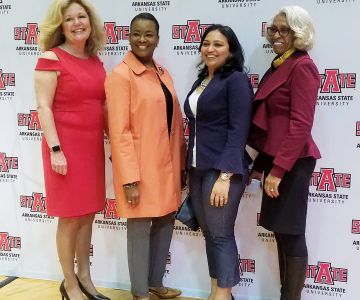It’s Not Time for Exponential Growth But Exponential Minds
Over the past few decades of globalized development, we have indeed built a new world order. But it is an order full of disorder. how our interwoven global “systems” produce massive new tensions and uncertainties for the next generation? Parents have an opportunity to unleash the future in a bold new way that is about raising exponentially human next generation.
Every culture has an old folktale about a boundless resource that keeps on growing and giving. When Jack planted the magic beans, his beanstalk grew to the sky. In a tale from India, where I was born, a prince carries a magic bag that will give him anything he wants.
As a child, I enjoyed these kinds of tales. Today, as a mother, I find my six-year-old likes them too. But we parents must see that our children learn to live in reality, not an illusion. And there is a modern myth, similar to the stories of Jack and the prince, which has to be put aside.
In this modern fairy tale, the magic ingredients are technology and business. All that people need to do to unleash the spell is put the two together. Supposedly the right mixture will give us stable, secure societies with endless economic growth—an ever-increasing bounty of more goods, higher “living standards,” and bigger profits!
Certainly, modern technologies are very valuable, and so are business skills. The problems lie in how we use the tools and what we expect. The pursuit of unending material growth is not only unrealistic; it is harmful. And the belief that ever-rising tides of prosperity will bring security and harmony for all turns out to be an equally flawed dream.
The realities are as follows. Over the past few decades of globalized development, we have indeed built a new world order. But it is an order full of disorder. In the next section, I will briefly outline how our interwoven global “systems” produce massive new tensions and uncertainties. (For example, they trigger unexpected ripple effects, of which the current pandemic is an example.)
Our children need learning that prepares them to create positive futures out of disorder and uncertainty. And I’ll conclude by showing how we can begin to give them that learning—right now, in the midst of the global crisis. To put it simply: We must move away from a mindset of exponential material growth. There are modes of learning that can cultivate a truly boundless, exponential resource: our human potential to adapt and create for the common good.
A New Age of Uncertainty and Disorder
Globalization and modernization have not created a more orderly world for youth. Since the European Renaissance, many people have believed the world was evolving toward becoming a rational, just, and well-functioning machine. Yet, in the words of sociologist Anthony Giddens, ‘‘living in the modern world is more like being aboard a careening juggernaut than being in a carefully controlled and well-driven motor car.’’— Psychologist Reed W.Larson, “Positive Development in a Disorderly World,” 2011
For most people through most of human history, uncertainty and disorder came from inability to master and share the basics of existence. Histories of medieval Europe, like Barbara Tuchman’s A Distant Mirror, describe how people of the time had to contend with crop failures, plagues, and turf wars between rival warlords. In later eras, despite gains in science and governance, the chaos often just seemed to expand in scale. The early to mid-20th century was marked by world wars, revolutions, dictatorial reigns of terror and a severe economic depression.
And then, as turmoil lessened in the later 20th century, the dream took hold that peace and stability could be married with ongoing increases in material wealth. The United States set the tone with its long-running postwar economic boom. Even factory workers grew able to afford new homes, new cars, and more. Americans also took an early lead in computer technology, which led to tapping the apparent magic of Moore’s Law, whereby for many years the power of computing chips grew exponentially while the costs dropped. (That’s why your smartphone can now do more than a whole collection of gadgets once did.)
Meanwhile, in the less-developed countries of mainland Asia, globalization and economic reforms lifted millions out of rural poverty into at least the entry-level margins of a modern middle class. Vietnam, once a war-torn land of poor rice farmers, became a leading exporter of electronics and athletic shoes. And thus the so-called American dream spread worldwide. Why couldn’t everyone’s beanstalk grow to the sky?
But as prosperity grew, so did the warning signs and alarm bells. From 1990 onward, the Intergovernmental Panel on Climate Change has issued increasingly dire reports on how production and consumption are driving our natural world out of balance. Although a new world war between nuclear superpowers has not come to pass, regional conflicts and acts of terrorism have kept proliferating. A 2017 report from the U.S.-based Center for Systemic Peace warned that we have entered an “Age of Complexity” in which “failures in conflict management and societal integration are [increasing the] potential for a global system catastrophe.”
Within the U.S., the rewards of growth now tend to flow to the privileged few. Studies by a Stanford research team confirmed that inequality is rising while there is a sharp decline in the numbers of young people who go on to earn more than their parents did. And everywhere, the civic foundations of stability seem to be eroding. “Global dissatisfaction with democracy has reached a record high,” a survey group at Cambridge University reported early this year—while many others note that nations liberated from old dictatorships are now embracing new ones.
The consensus is that people long for some form of “order,” even if it is imposed, because they’ve grown frustrated with the complexity and unreliability of the social systems they have. The global growth machine that we have built is, in fact, a tenuously wired-up juggernaut teetering in and out of equilibrium. Societies and economies are now so interlinked that seemingly minor disturbances can raise widespread havoc. In the financial debacle of 2007-8, the collapse of a niche business—subprime mortgage lending in the U.S.—rippled across the world, setting off banking crises in more than 20 countries and triggering a global recession.
Which brings us to the current pandemic. When the forces of nature are added to the mix, they can magnify the disruption immensely. Very few of us imagined that a minor virus mutation in one corner of the world would lead to social and economic life grinding to a halt globally, with empty streets and people confined to their homes while medical teams scramble to treat those who are infected.
I am personally feeling the effects on families with children. My 6-year-old daughter, who’d been so excited to go off to school with her friends, now spends long days at home. She could easily become a target of restless boredom mixed with fears and worries. It’s not an ideal situation for any family. Yet in it, I see opportunity.
Toward a Shift in Learning: from Standardized and Linear to Infinitely Adaptive
All children now have an opportunity to learn new ways of thinking about the world, and being in the world. Ideally this will prepare them to navigate times in which disorder, disruption, and unpredictability are likely to keep arising in massively interconnected forms. And they probably have not been getting that kind of education from their schools.
At present, most schools are trying to replicate classroom learning online. The focus is mainly on formal academic outcomes: on getting kids to complete their math or history lessons for the year. In terms of immediate need, this is understandable. Students must be ready to move to the next grade level or graduate.
An innate shortcoming of the approach, however, is that it’s prepackaged and linear. The model assumes that “education” happens in official academic settings, by moving up the ladder through prescribed steps meant to build logically on each other. Eventually, the linear process leads to a diploma or degree—which supposedly certifies the student to take a position in the growth machine, earning his or her piece of the pie.
There is no doubt that young people acquire useful knowledge in this manner. But it barely begins to tap what they are capable of learning, let alone what they have to learn for being effective and happy in a world where human and natural ecosystems interact in myriad ways beyond logical analysis.
The good news is that alternate approaches to learning exist. They are more suited to the task and can be applied now, by any parent. Modern educators and scholars have done a huge amount of good work that I’ll try to summarize quickly and understandably.
First, substantial research shows that a great deal of valuable learning can only take place outside the classroom—which is where our kids currently are. As to what can be learned there, Albert Bandura—a renowned expert in child development—emphasizes the need to develop “agency.” This simply means learning to take charge of things, by setting goals and organizing your actions to reach them. Bandura notes that this can be done both individually and collectively and that it requires the practice of abilities such as planning, self-reflection, and course correction.
Next, hear some words of wisdom from a Nobel-winning economist. Amartya Sen, in his “capability approach,” argues that economic progress should be measured not just by standard growth metrics like GDP or per-cap income, but rather by the extent to which all people have the capabilities to live the kind of life they value. That is a humanistic view and also a more personalized view, which applies nicely to learning in the home. What do you and your family truly value in life? What capabilities will your children need, have a life that expresses those values?
Thus far, we are talking in big-picture terms which may sound daunting. You may wonder how to get your children working on grand visions for the future when they don’t want to help clean the house. So let’s bring the conversation down to nuts and bolts. A growing body of research suggests that the most powerful learning combines intellectual comprehension with emotional engagement and practical application. Or to put it plainly: the best learning involves “the head, the heart, and the hands.”
Some parents in the current crisis have started leading their children along this threefold path. For instance, they are helping the kids learn to bake or cook, or joining with them to plant a garden or play music together. That is an excellent start. Now let’s consider how to expand it into new dimensions.
A Time to Become Exponentially Human
If we parents leverage the opportunity that the current crisis presents, our children can begin to move beyond old patterns of learning. These patterns have taught them (and taught us, too!) to think linearly but expect exponential, ever-increasing returns. We’ve all been conditioned to believe that by “doing our homework,” we will earn the right to produce and consume more goods, indefinitely.
Together we can now begin to learn toward a new vision, recognizing what is truly limitless: the potential within each person—and the far greater potential that can come from working together for the common good. When we learn along these lines, we become exponential human beings. We see how the best-laid, most logical plans can easily be upset by events that were not predictable. We recognize that the world we share is immensely complicated and “messy”; that life is uncertain by its very nature. And yet we are not daunted by the uncertainty, because we are tapping our unlimited abilities to create and adapt together.
What I’m saying may sound like a fantastic pipe dream. I beg you to understand that it is our only way forward, and the only way that’s true to who we really are. We are not in this world as citizens of one place or another, each granted the right to pursue our own narrow interests with disregard to the rest. We are born to love and live together; we are born to eat, drink, and breathe the life of a world that we cohabit and co-create.
We are born to be exponential humans. Let’s begin teaching our children to “do better than us” not by earning more money or having a nicer car—but by becoming exponentially human.



